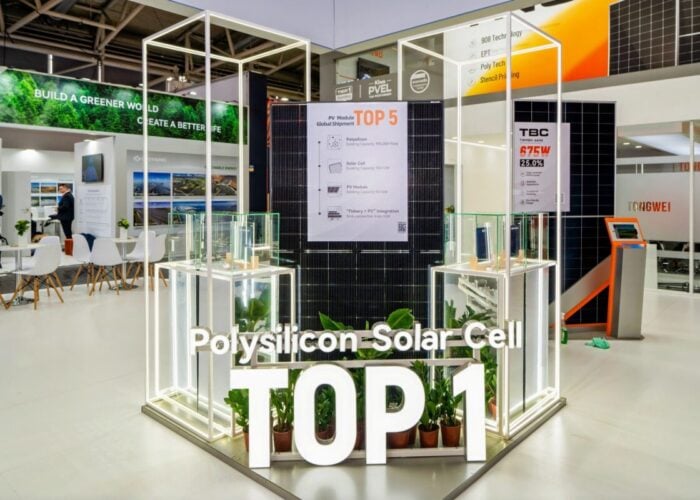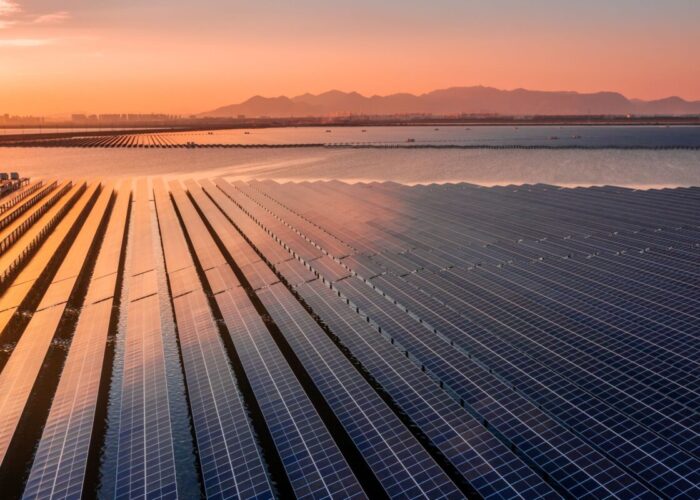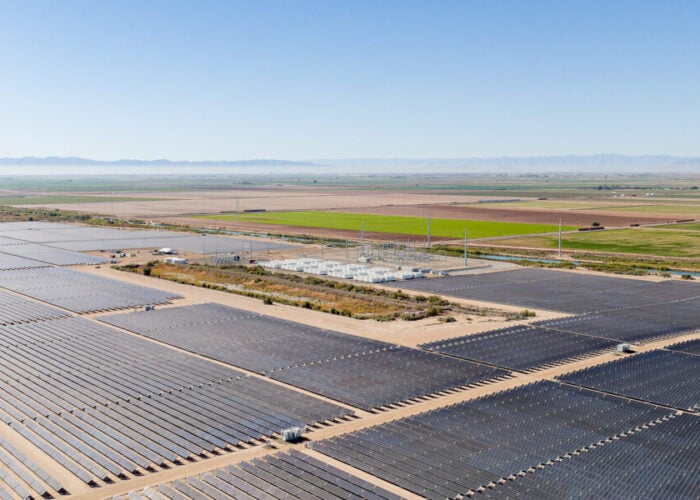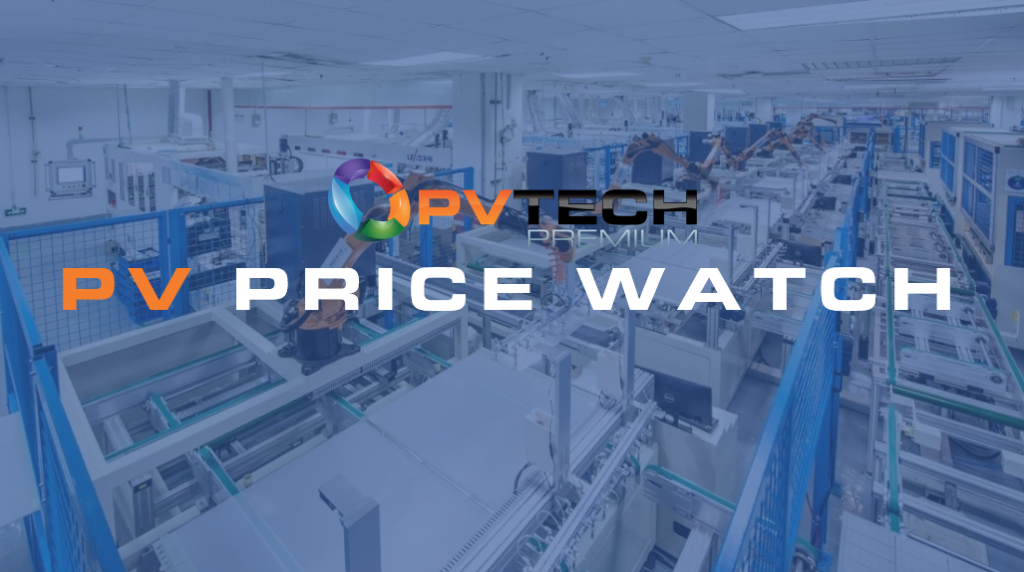
In this special, free-of-charge edition of PV Price Watch, Finlay Colville, head of research at PV Tech, discusses the numerous factors that have contributed to a significant rise in module pricing in the previous two years, before exploring where module pricing could go into 2024. PV Price Watch is a regular feature for PV Tech Premium subscribers, charting costs and prices throughout the solar value chain. To subscribe to PV Tech Premium and gain access to PV Price Watch, click here.
When will module prices start coming down? Everyone is asking this today; it was the most asked question in the solar industry in 2021 and will be during 2022.
Unlock unlimited access for 12 whole months of distinctive global analysis
Photovoltaics International is now included.
- Regular insight and analysis of the industry’s biggest developments
- In-depth interviews with the industry’s leading figures
- Unlimited digital access to the PV Tech Power journal catalogue
- Unlimited digital access to the Photovoltaics International journal catalogue
- Access to more than 1,000 technical papers
- Discounts on Solar Media’s portfolio of events, in-person and virtual
However, it is not a question that can be answered by looking simply at legacy supply/demand considerations, as has been done before in the industry; a different set of conditions is needed to understand future module pricing, and the factors that have created this have only emerged in the past 12-18 months.
This article discusses what is driving PV module pricing today, and ultimately why no-one should expect to see any meaningful declines in module prices for the next 18 months at least; and in fact, why preparing for further uptick is going to be the prudent way to proceed.
What has changed?
Perhaps the most important issue to understand is why things are different today with the sector as a whole, how this is impacting on module pricing and finally what the leading indicators will be to suggest any major change to the module pricing and availability conundrum seen today by developers and EPCs globally.
Until 2020, the PV industry had got into something of a rut with regards module supply. Downstream channels (module buyers) had somehow managed to convince themselves that PV modules were commoditised (at least across everything c-Si), pricing would routinely come down 5-10% every year without question, and that there would always be short-term availability of product when they so desired.
It is understandable why this set of simplified assumptions had set in. By 2019/2020, everyone was offering 72-cell p-mono PERC bifacial modules. Module pricing had followed a somewhat predictable downward trend, with many naively assuming this was driven by economies of scale and some kind of ‘learning curve’ the industry was attached to. And, demand had been driven largely until then by a small group of countries with incentive rates.
It led to spreadsheet calculations for site return on investments that were based on module pricing being at a certain point at any given time (when deliveries were required for site build). Therefore, when it became clear to many in the downstream sector (largely during 2021) that not only were modules not going to fall to expected levels when needed, but that even getting any supply by this time was not guaranteed, a huge degree of confusion set in.
So, the obvious question is ask first is: what changed?
The answer to this is of course not any single event, but a sequence of events that started in 2019/2020 and were then compounded during 2021 and 2022. Let me try to explain this now.
The first sign that the industry was about to change began in 2019. This was the point where the concept of subsidy-free became real. Until then, it had been an aspiration that everyone knew would happen, but were never really sure when. And until 2019, it didn’t matter too much as there were enough options for module suppliers in terms of regions and countries to focus on.
This new paradigm, that would ultimately be the main driver for the industry to shift from demand-constrained to production-led, continued to evolve during 2020 and the start of 2021. During this time, module prices were still falling, and the case for solar within the overall energy mix at the country-level only grew.
During the second half of 2021, changes really started to happen. Not so much at the industry-specific level (or from any individual government target standpoint), but from global corporates resetting long-term plans leading up to the COP26 meeting in Glasgow.
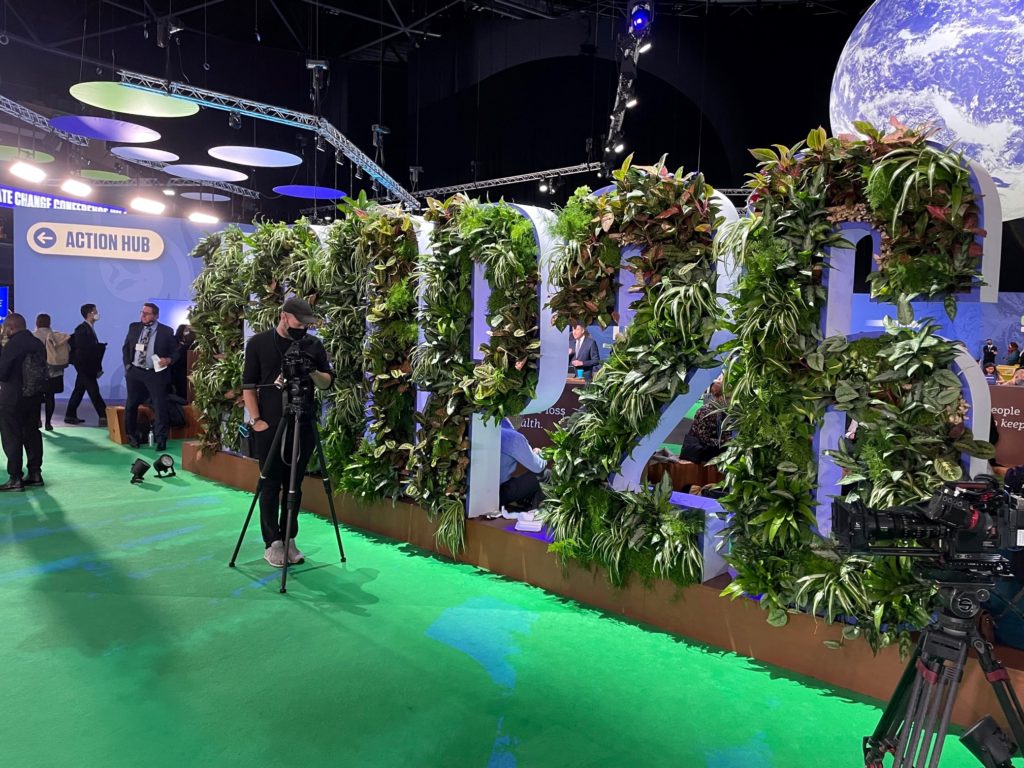
In recent years, the solar industry had always galvanised itself ahead of COP gatherings. Mostly, this was dominated by global module suppliers pushing the technology and trying to get solar more on the map ahead of any changes to government target changes for renewables after each event.
But COP26 was different. Not because of what was said at the event, or due to any new targets agreed upon after by major countries: but because the corporate world used the timing of this event to reposition itself by way of pledging to net zero targets by 2050. Corporates, utilities and IPPs the world over had never been shy of talking up renewables. But with the exception maybe of IKEA and Amazon, almost everything else in hindsight was largely a case of talking-the-talk.
Leading up to COP26, during and after, everything changed. Almost overnight, it was no longer a brand-driven token gesture to have a net zero aspiration: it had become a path of zero-resistance where failure to act would ultimately kill a brand or result in share price (market cap) deterioration. COP26 can now be seen as the catalyst; an event that set in place a domino-effect that has resulted in corporates, utilities and governments finally getting real on renewables as part of non-negotiable net zero goals.
And within the ‘renewable’ space, it remains a fact that solar PV is the most attractive technology, as it can be deployed rapidly, self-financed and fully-owned, and located on factory rooftops or nearby ground-mounted locations.
The net result of this was that ‘demand’ for solar changed overnight. No longer could market observers simply add up 20-30 countries’ targets (mostly arising from governments or trade bodies) and end up with projections for an industry ‘size’ going forward. Demand had flipped rapidly to levels that were uncountable, and in fact, didn’t even need to be estimated because the industry supply side had become so totally short of meeting this massive upsurge for new solar energy.
From a very simplistic standpoint, it turned the industry into a production-led engine. That is, the size of the industry (still erroneously called ‘demand’ by many observers), or new capacity additions on an annual basis, were now being dictated by what was produced. This defined the industry in 2021 for the first time, is happening again in 2022, and is almost certainly going to continue for the next few years, unless something significant changes.
This makes module supply a seller’s market. It explains why module pricing has been going up during the past 12 months, and shows no signs of coming down. It frames the basic question driving this article: where is module price going in the next two years?
Putting the China polysilicon cartel issue into context
For the past 12 months, the narrative from most module suppliers for high pricing has been down to the increase in polysilicon pricing, something everyone can point to easily, and form a somewhat simplistic argument based on raw material costs going up. Wafer producers moan about polysilicon prices. Cell makers moan about wafer price increases. And module assembly companies complete the moaning-cycle by complaining about an uptick in cell prices.
However, in the past 12 months, the major polysilicon, wafer, cell and module makers have all made money. Gross margins have held up at acceptable levels. Funds have been secured to continue capacity additions. Capex and R&D spending has gone up, and for most, by quite some margin. So, something is clearly not right when everyone points the finger at polysilicon producers saying they are hiking the price, and this is leading to higher module prices.
Actually, there are two things going on here at the same time.
First, the easy one. Put aside margins through the value-chain (70% gross margins for major Chinese poly makers, 10-15% for major Chinese module suppliers), and look at module pricing only. That is being driven today by the issues discussed in the previous section: demand has skyrocketed and it is a seller’s market.
Now let’s look at the margin/profit issue. Today, there is an imbalance: that’s all it is. Polysilicon producers have put pricing up because they can. Polysilicon supply is the gating element in making everything else, and making polysilicon is the upstream starting point. So, this small group of players control the sector today in terms of overall volumes, and how much module availability there is.
You can forget ‘capacity’ at any other stage: ingot, wafer, cell, module. Adding capacity here is pennies by comparison to poly plants, and can be added and ramped in a fraction of the time it takes to build a new polysilicon plant.
The only surprise has been how long this margin imbalance (within China) has happened. I had expected by now that Beijing would have stepped in and told the leading poly makers to stop acting out-of-synch with the overall China Inc. plan to dominate global PV manufacturing. This has clearly not happened or has been ignored!
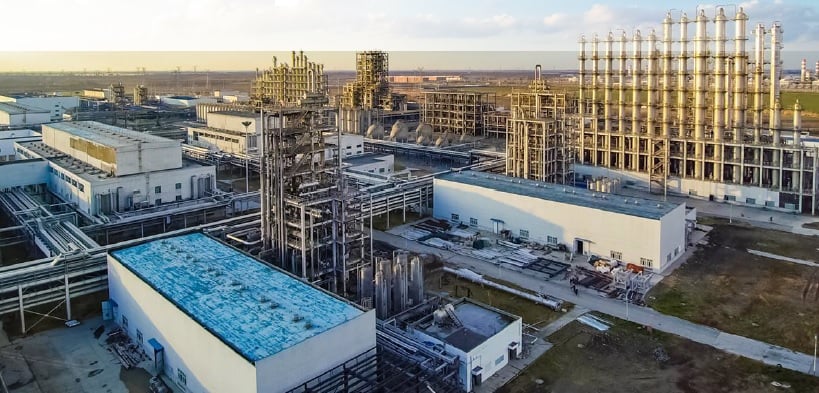
And so the narrative continues today; mostly from module sales guys talking to their customers. Module prices are high because polysilicon price is high. No one is going to take anyone to task for saying this. It sounds plausible, and you can even show a graph of polysilicon spot pricing over time to support the argument.
But to simply say that module pricing will come down when polysilicon pricing comes down is naïve and most likely wrong. Again, let me try to explain why!
If one follows the logic that major China producers need to prosper ‘together’, then the natural consequence of a polysilicon price decline simply results in a more even spread of profits through the value chain (wafer, cell and module sellers), not a binary reduction in pricing down the value chain. So, as opposed to one part of the chain making 70% margin, each part makes 20%, with possibly polysilicon suppliers having an upside at the 25-30% level.
If you had given that proposition to the top 10 poly-to-module producers in China a few years ago, they would have snapped it up in a second.
The hypothesis (which of course it is, I don’t have a crystal ball) is completely based on the acceptance that demand for solar has changed in the way I outlined earlier. Were that not to be true, the above narrative collapses at once, and the industry returns to the way it operated as it grew to the 200GW new installation level annually by the start of 2022. Please, you decide!
But what about all these new polysilicon announcements?
During the past 12 months, barely a week has passed without some announcement from China for investments into new polysilicon capacity for the 2023-2025 period. The vast majority of this is based on building new, and massive, plants within Inner Mongolia. Add them up in a spreadsheet. Make your mind up which are real.
Sadly, it turns out that many of the current module pricing ‘forecasts’ are doing just this: adding up announcements. Has no one learned anything in the past 20 years? Yes, Chinese companies can scale manufacturing at a speed and cost no other country can come close to. But there is always a massive dose of hype and jumping-on-the-bandwagon that gets disseminated to the outside world.
And this forms the other part of the ‘issue’ I have with long-term module pricing forecasts that seem to be doing the rounds in the sector today. First, they have ‘demand’ wrong as stated above. But they also have ‘supply’ wrong. I guess if your pricing forecasts are based on the supply/demand imbalance and you are grossly wrong on both supply and demand outlooks, it follows that the subsequent pricing forecasts will be rather meaningless. It sounds somewhat harsh, but it really is a reminder of how the industry is in a different place to a few years ago, and needs a different approach to forecasting anything.
There is new polysilicon capacity coming online this year, mostly backend weighted. Almost for certain, this will get consumed at once, based on contractual module shipments from the top suppliers in the market today. There is not enough new polysilicon capacity coming online at once to have any short-term over-supply (at the module level) that could result in a brief lapse to the current status quo.
Moving into 2023 and 2024, and the exact picture is impossible to play out with any certainty. How much new polysilicon will come online at any given time (quarter)? Will there be enough new supply within any quarter that causes a blip to short-term supply levels? Will any new additions simply follow the outlook for 2022: instant consumption within the value-chain, still nowhere near enough to meet the insatiable desire for solar panels globally?
To be honest, no one will know for about another 12 months. Most of these new Inner Mongolia plans are yet to start any form of construction, and when they do, we have this 18 month to two year time lag for any meaningful output.
And of course, there is the risk factor that all this new polysilicon is in China, with the backdrop of the Xinjiang issue that ushered in the need for component supply chain auditing in the past 12 months. Yes, all new plans for polysilicon are outside Xinjiang (mostly, as stated, in Inner Mongolia), but what if manufacturing within Inner Mongolia is put under the spotlight at some point in the future? It all adds to risk from a raw material standpoint. The world does not have the luxury of some massive new polysilicon factories emerging outside China anywhere in the short-term (nor in fact any time before 2030).
The only chance then for full value-chain price reduction (coming from strong oversupply ultimately of modules to the end-market) is if a whole bunch of these proposed new polysilicon plants do come online in China during 2023. Then – and it is a big if – possibly 2024 could have some grounds for optimism. Well, at least until a few weeks ago, this was something I would have held some hope for, but the world has changed in the past few weeks as we all know. And the ramifications of this, in terms of solar energy demand, now need to be reconsidered again – over and above everything within this article up until now.
Energy security – the next big demand driver
It is too early to say exactly what the outcome will be for the global energy sector, based on the current conflict within Ukraine. But for renewables (and solar demand), this is now starting to come together. And in many respects, the ultimate driver is something that – like net zero – has been around for many years, but never really been fully enacted upon: energy security.
“And the ramifications of this, in terms of solar energy demand, now need to be reconsidered again.”
One actually has to go back to the 1970s and the OPEC oil embargo that resulted in oil shortages and pricing instability to find a similar, specific event that thrust solar/renewables into the spotlight. At that time, the solar industry was barely established, but interestingly enough, that crisis was the catalyst that brought energy companies like BP and Shell into solar PV (from an R&D standpoint). And by the end of that decade, the most publicised output was a solar panel (albeit solar thermal) installation on top of the East Wing of the White House, with then President Carter proclaiming “the power of the sun to enrich our lives as we move away from our crippling dependence on foreign oil”. It almost reads prophetic today.
Over the years, the need for energy independence and security has not gone away. But today – in March 2022 – it has hit its most critical point ever seen, arising from oil supply globally during the Ukraine conflict.
If 2021 was the year net zero moved from aspirational to essential, 2022 will likely be the year that energy security makes this same transition. It will likely serve to give renewable energy the biggest push it has ever had, and solar energy will be one of the main beneficiaries within the new energy mix landscape set to unfold going forward to 2030.
Governments and countries need to be energy independent, not global utilities or corporates. Global utilities and corporates have their hands full with their net zero goals. Over the next 12-18 months, fully expect to hear massive new commitments to renewables as countries finally realise there is no option but to act towards energy security, and not simply talk about it from an aspirational standpoint.
It is impossible to factor that into demand for solar: only to say that it moves it to an even higher level and one that does nothing to help anyone waiting for a module oversupply that could bring down pricing.
Getting back to module pricing
Module pricing is and has never been a universal constant. At any given time, there are differences depending on a host of factors, independent to anything arising from supply/demand considerations.
Module ASPs are segment-specific (residential, small rooftop, large rooftop, and varies scales based purely on volume up to several-hundreds of MWs). They are country-specific; from the lows of India to the highs of Californian residential rooftops. They are brand-specific. And they are technology-specific.
Today, c-Si module ASPs (from a DDP standpoint) range anywhere from the low 20s (c/W) to the mid 40s, with a blended average currently around the 26-27c/W level for major global players. The US market is the only one in recent years that has had an incremental delta (tariff), based on Section 201; AD/CVD is largely of academic consequence.
One can imagine that there will always be this variation, sometimes wider (if countries like India keep using products that are not state-of-the-art in technology, or if import duties get added on an ad-hoc basis).
Therefore, perhaps the best way to look at 2022/2023 pricing, at least, is to take current levels, and then assume +/-10% variation owing to any seasonality or short-term changes. But fundamentally flat-to-moderately-increasing. By the end of 2023 and through 2024, we could see a bit more volatility as this is when some step-wise polysilicon additions could come into play, but the basis hypothesis is still that soaring demand will consume this quickly.
Thankfully, it is not all about module pricing anymore
Having spent the better part of 3,000 words discussing module pricing, there is a silver lining for anyone now worrying about not being able to show sufficient RoI on upfront site investments; it is not all about module pricing. Here is why.
Let me return to one of the early themes within this article. Solar modules are not a commoditised product. In fact, the performance of solar modules is moving forward at a rate never seen before within the industry. Mono wafers, bifacial modules, n-type substrates, better performance at elevated temperatures, reduced degradation, and so on.
For some time now, module suppliers have been pushing LCOE as the sales argument, not module $/W pricing. They are not wrong here. The only problem so far is that they have been the ones pushing this mostly to an end-sector still largely fixated on $/Wp-dc (monofacial power driven) at STC. This is not the world of modules today, especially within the utility segment.
At a minimum, it is LCOE driven. More accurately, it is simply RoI-based on yield over 25-40 years, all direct and indirect costs factored in.
Simply put, site returns can increase going forward year-on-year, even if $/Wp-dc module pricing stays constant. In fact, the delta only gets bigger if returns are hedged against wholesale energy prices that can only be trending upwards in coming years.
Perhaps it is better to secure supply now
Perhaps the best thing for developers, EPCs and investors (that are focused on adding gigawatts of new solar PV capacity in the coming years) can do is to simply secure supply now for 2023 and 2024 at today’s market price. Waiting for a sign that module pricing will decline may simply put them to be bottom of the queue for supply, and that 2023/2024 quickly becomes 2024/2025.
For those today – and out to the end of 2022 – that fixed in prices back in 2020 or the start of 2021, it should be a time of relative smugness. Assuming of course that your module supplier decided to honour the contract and did not resort to force-majeure and walk away from the supply arrangement.
Maybe the focus should be about how to optimize returns based on what the world will look like in 2023-2025, and just take the current module pricing as a given and move on.
Everyone will ultimately make their own call. Some will wait, and could just end up in the right place at the right time when there is some short-term need for a particular module supplier to offload product at a discounted rate. But for most, this luxury is not possible.



